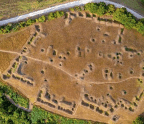For the love of trees

Jacinda Ardern
THE FOREST
Like a lot of people who live in rural parts of New Zealand, I grew up next to a small forest. It was at the end of our neighbour’s farm. It didn’t have a name, it was just a small patch of trees that my sister and I called The Forest.
I would spend hours playing in the small creek and amongst the bush. That tiny patch of trees and undergrowth and the small bit of water kept me entertained through endless school holidays. As I grew older and went back home, I realised just how small it actually was: that sensation we all have of discovering something that seemed enormous as a child appears modest as an adult.
The forest was more than a playground, it also found me my first job. My sister and I found a bunch of pamphlets dumped down there one day. And then another lot. And then another. In a quest to find out what was going on, my mum made a few phone calls – one of the locals was dumping their leaflet round and next thing we knew, we had a new job.

That small forest doesn’t exist any more. It’s been felled to make way for houses as my old home town grows. It reminds me, though, that our forests, our trees, provide us with so many things. Protection against erosion, mitigation in the face of climate change, a habitat, or, sometimes, just a simple child’s playground.
Jacinda Ardern is the Prime Minister of New Zealand

Simon Bridges
THE WAITĀKERES ON MY DOORSTEP
For me, the Waitākere Ranges was a case of love at first sight. I grew up on the West Auckland beaches, with the Waitākeres on my doorstep. They were the jewel in the Auckland regional park network. With more than 200km of tracks exploring beautiful kauri forests and majestic waterfalls, the 17,000ha Waitākeres had something for everyone – whether it be a short walk or a multi-day tramp. Not to mention their role as the collection point for Auckland’s water supply.
Like many families, ours spent what felt like weeks exploring the ranges. It was where we bonded, where we enjoyed each other’s company and where we interacted with nature. I don’t spend nearly enough time there today, and actually I miss it.

When you return to New Zealand from overseas, and you see the Waitākeres, you know you’re home – a welcome sight. Sadly, many of the tracks are now closed to prevent the spread of kauri dieback, which is devastating one of our most iconic tree species. I want my children to live in a pristine New Zealand, where they can take their children to swim at Piha or tramp in the Waitākeres. I want my grandchildren, and yours, to know that our generation has done all it can to protect the environment.
The Waitākeres are under threat; we must do everything we can to protect them.
Simon Bridges is the leader of the National Party
You’re reading a preview, subscribe to read more.
Start your free 30 days





